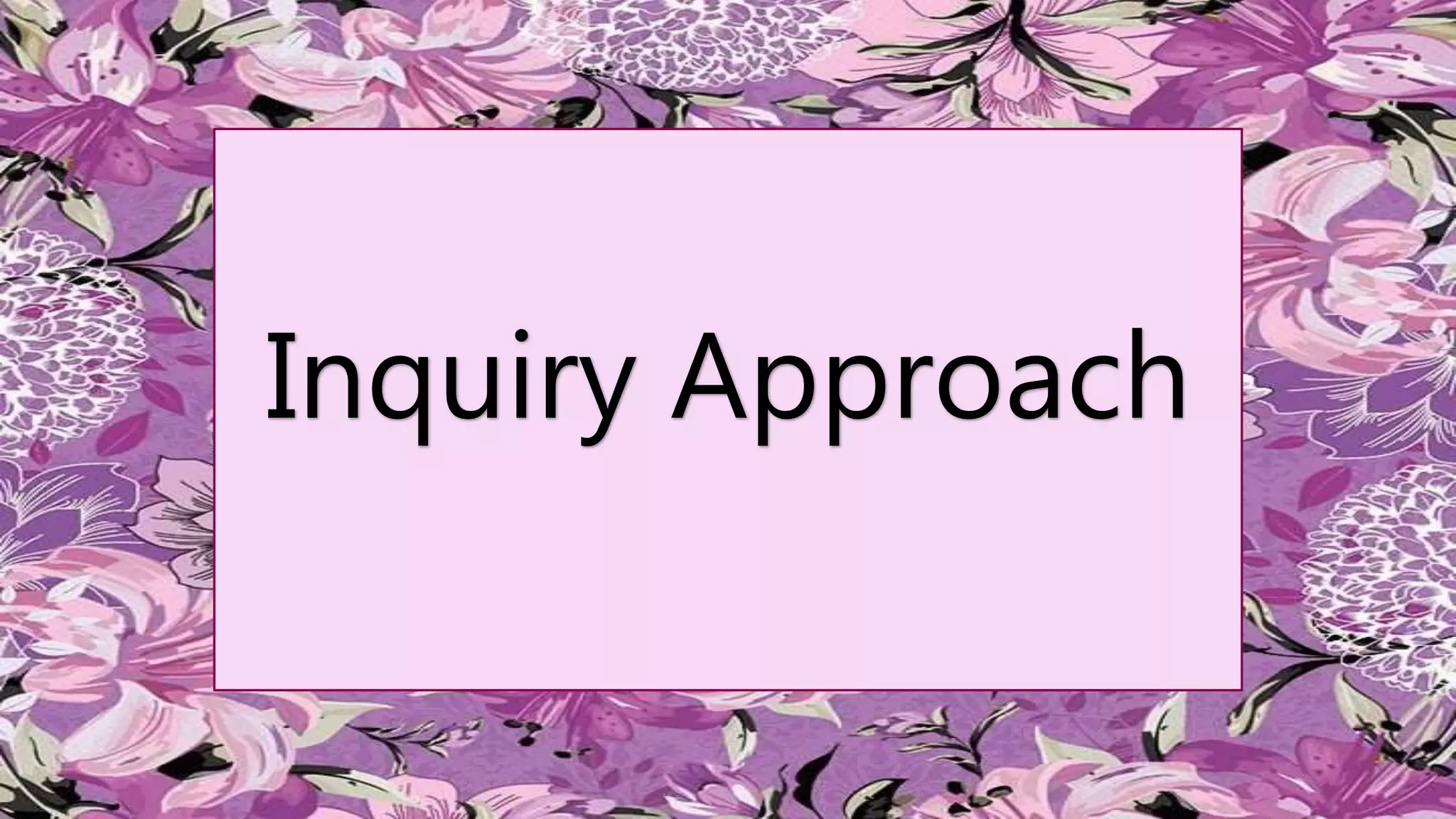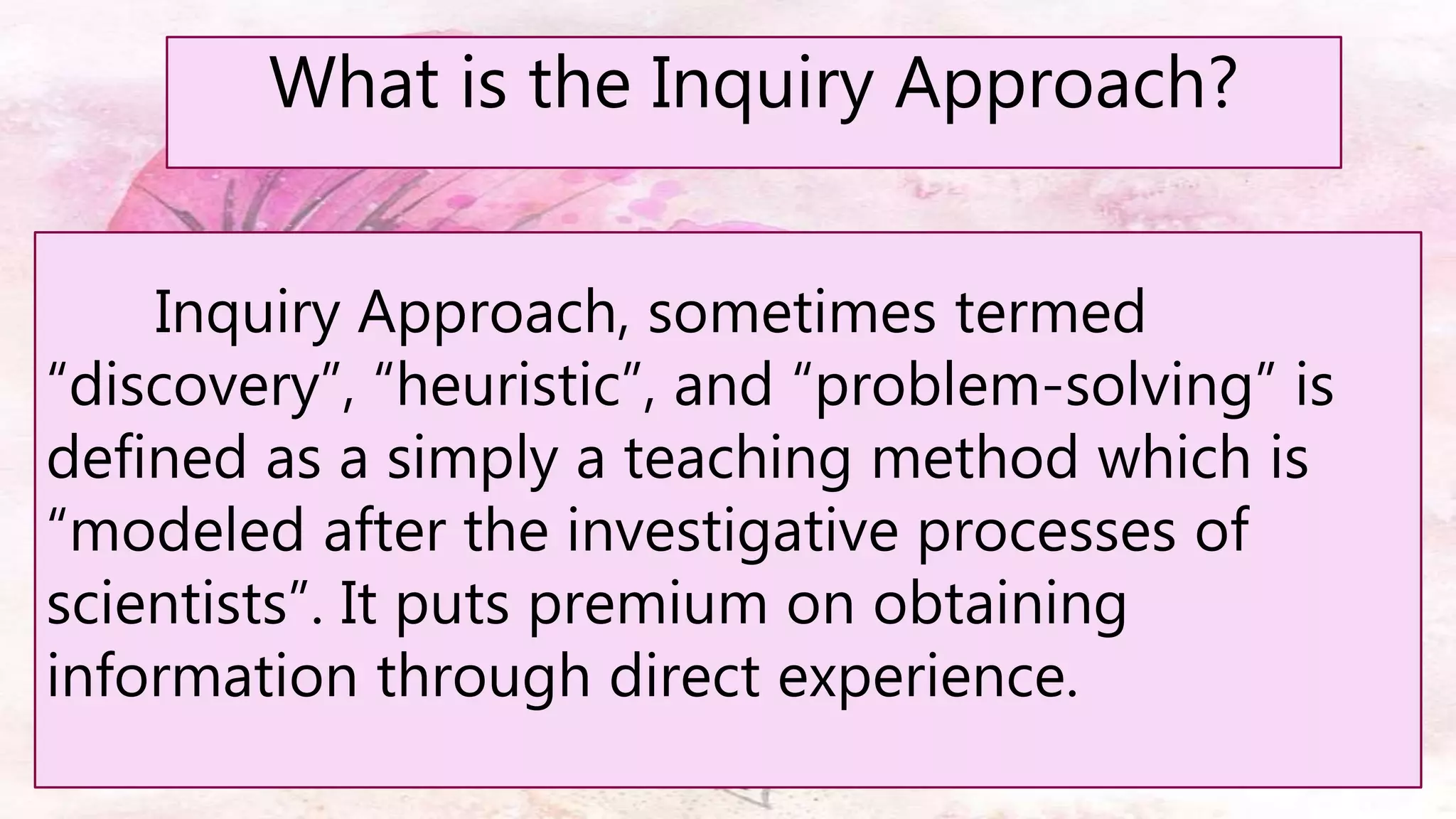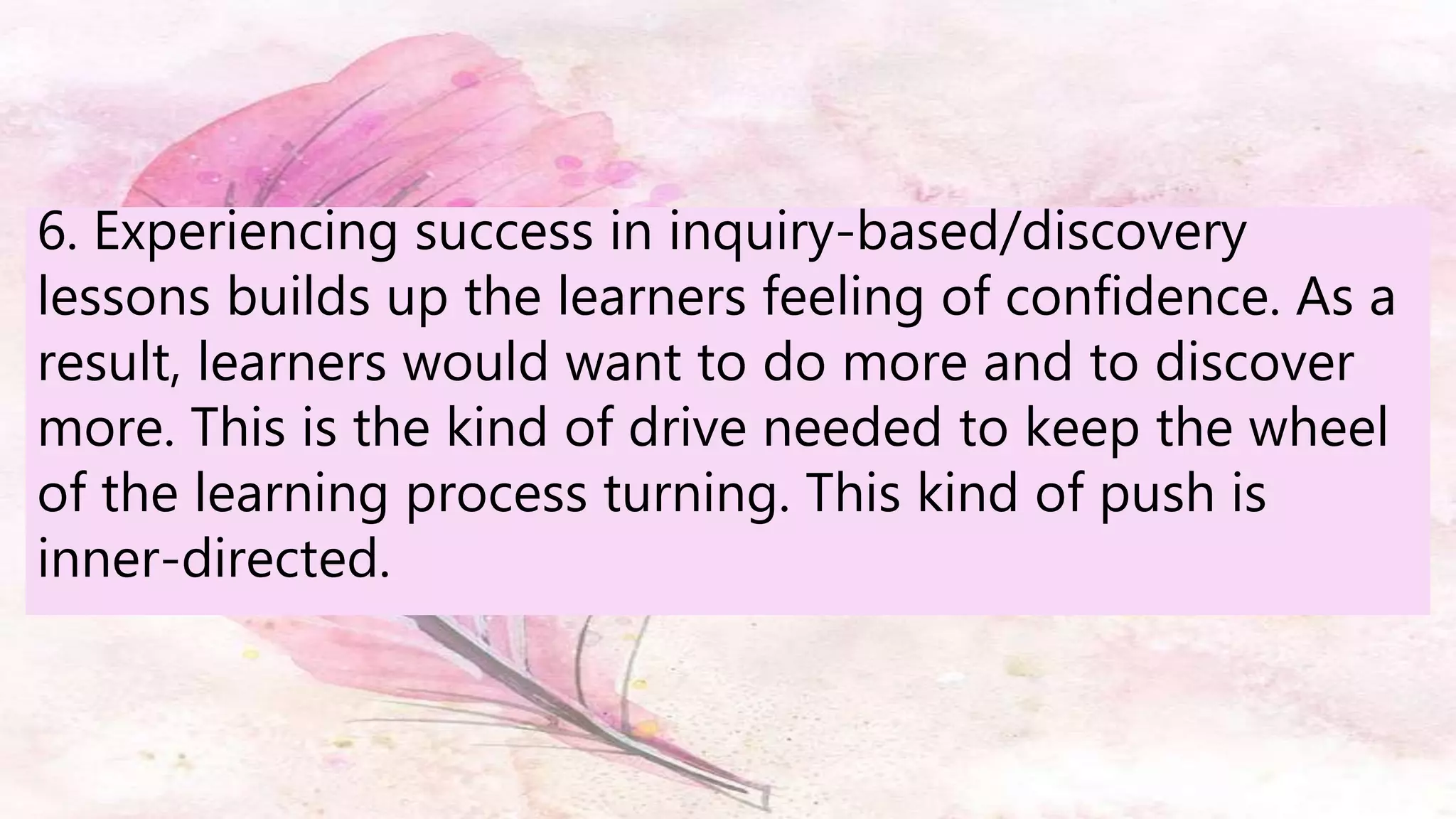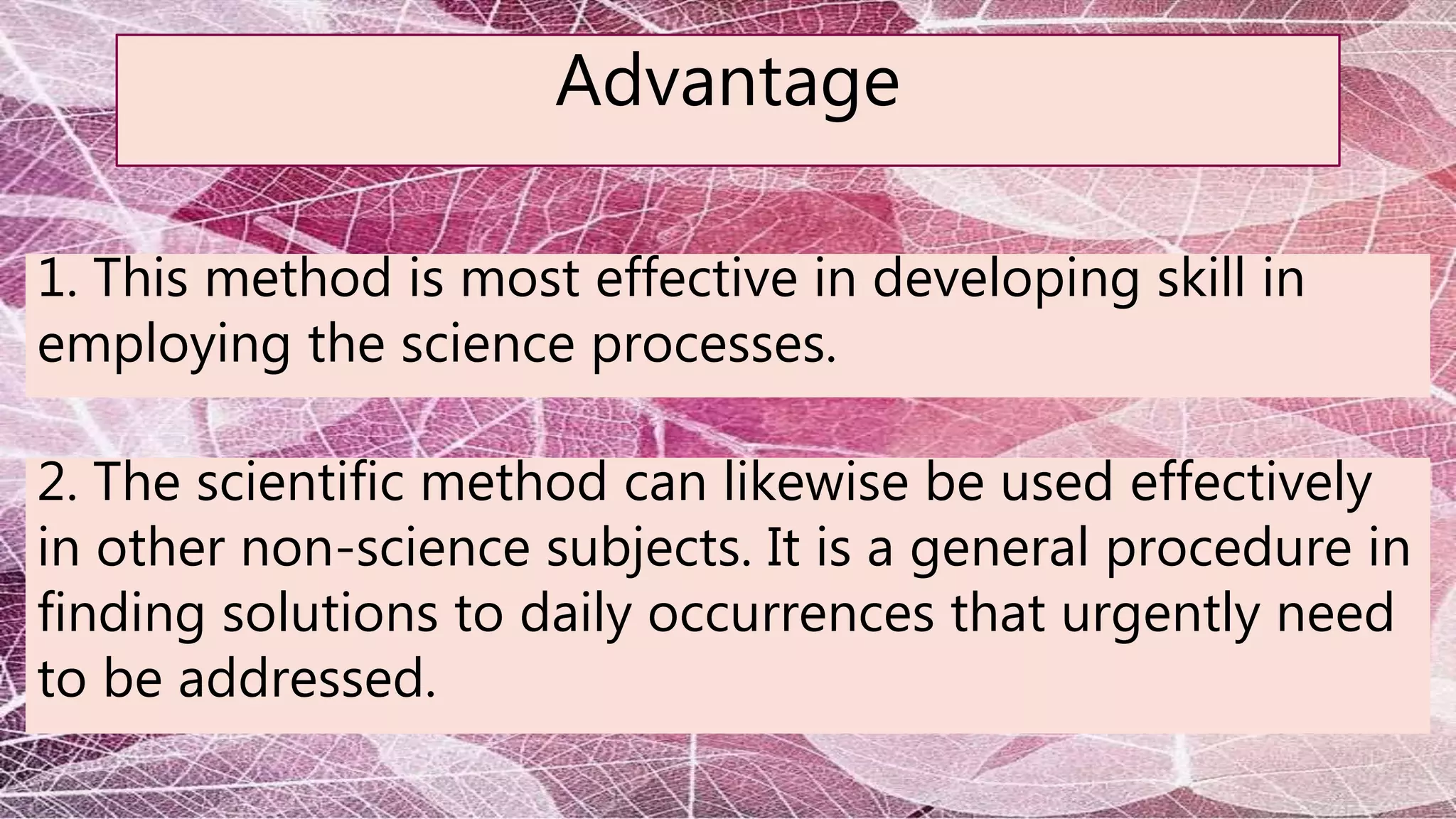The inquiry approach, also known as discovery or problem-solving, emphasizes active learning through direct experience and independent investigation by students. It involves guiding learners to formulate questions, gather data, and present findings, fostering critical thinking and a sense of responsibility. This method enhances students' engagement and retention of knowledge by allowing them to manage their own learning process.




























